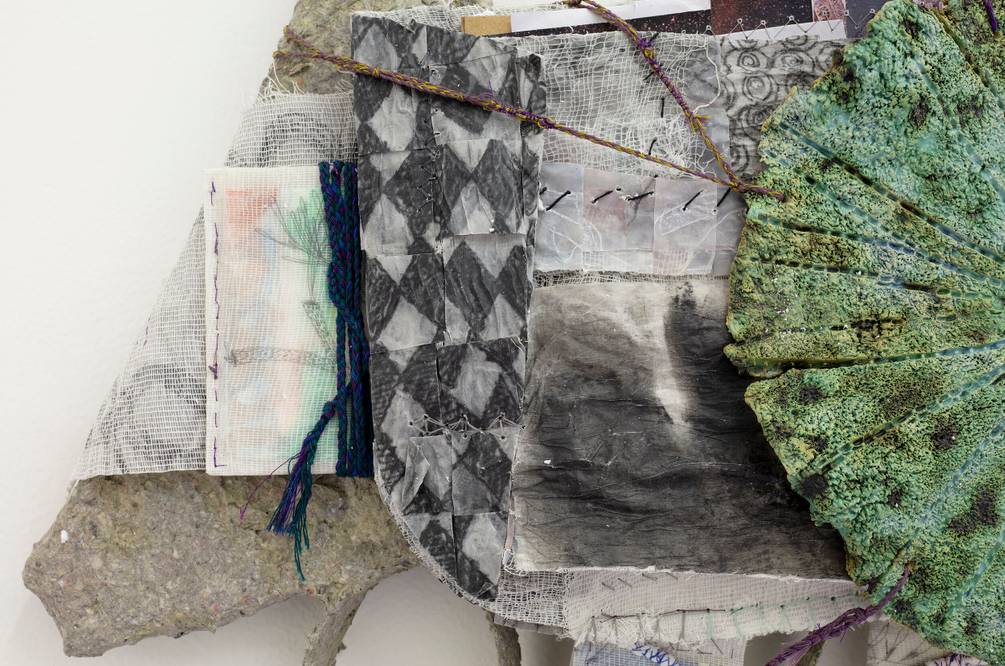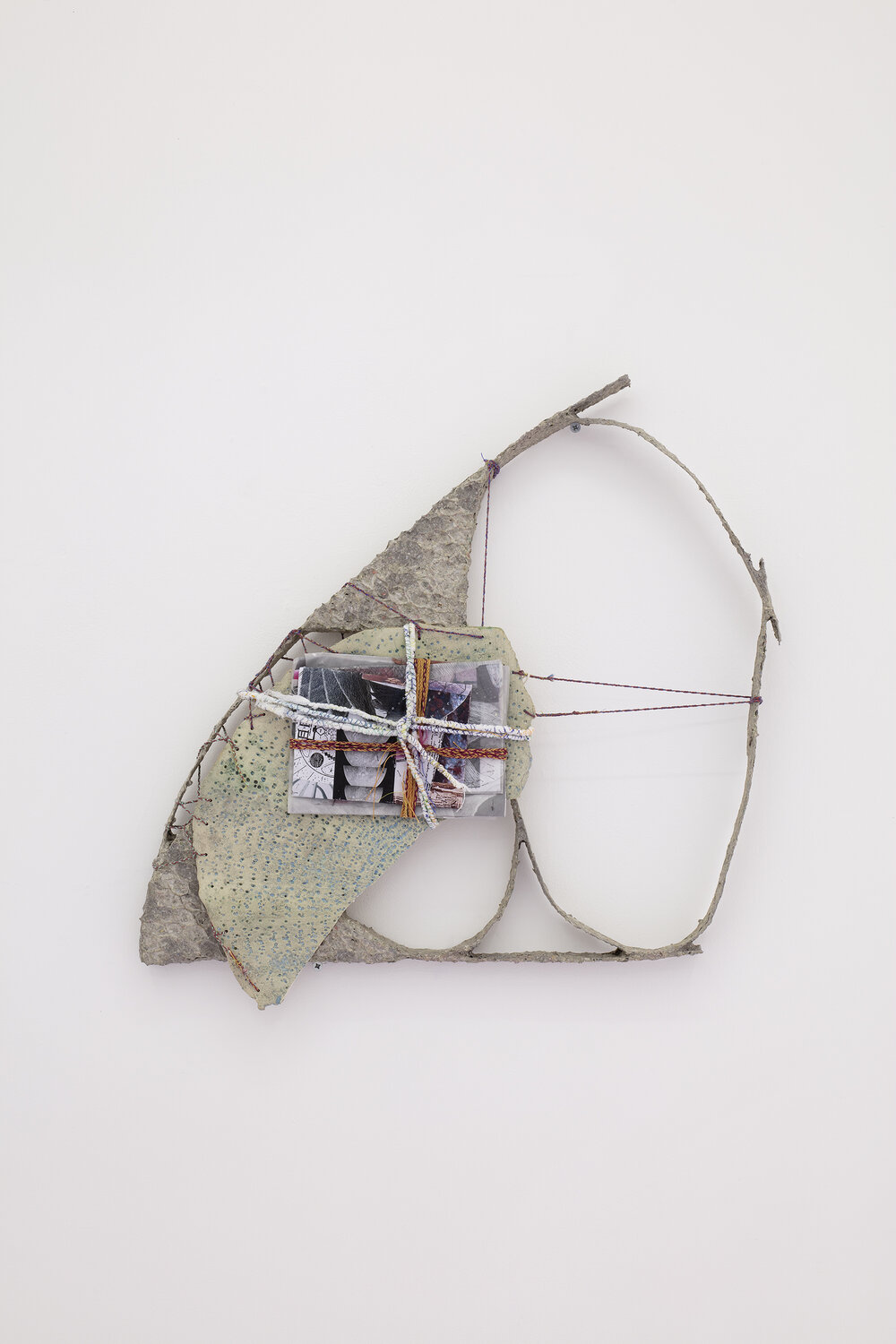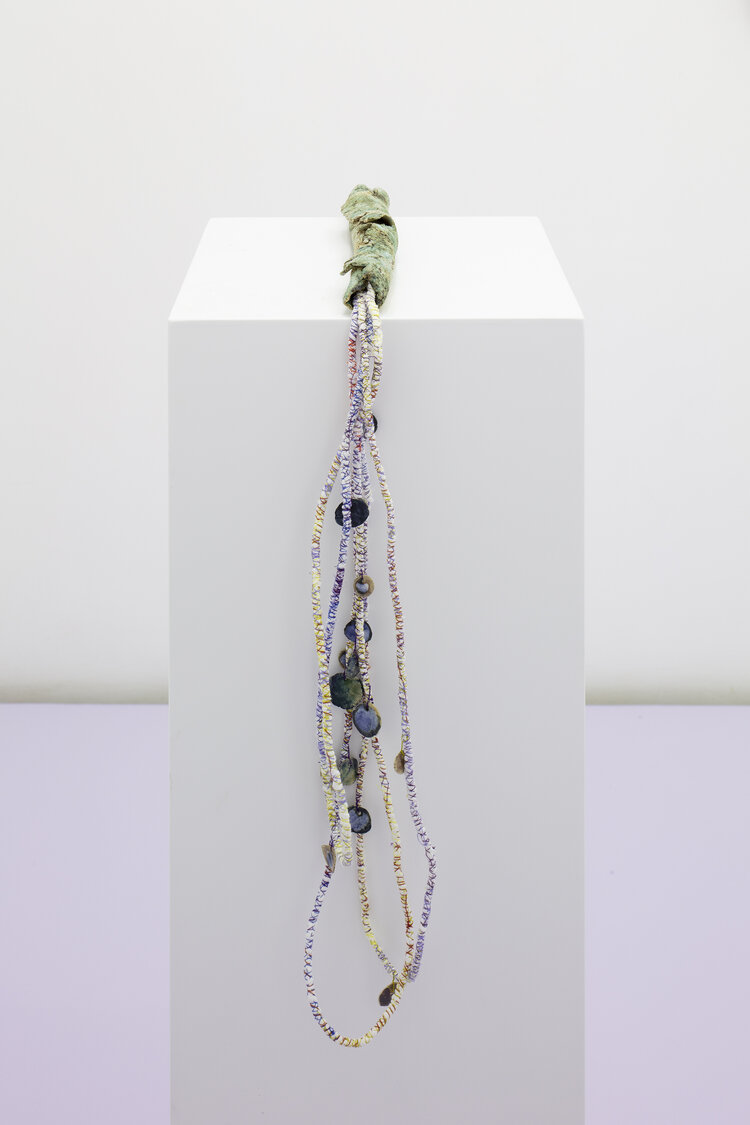
Review
Intuit the Water: Isabel Nuño de Buen
by Bruno Enciso
On 'En Otro Tiempo y Espacio' (In Another Time and Space) at Lulu
Reading time
5 min
Isabel Nuño de Buen presents at Lulu some of her most recent works, from the series Codex. The title leads to various reflections, derived from artistic endeavors that imagine spaces to which to migrate in order to leave behind a world in decadence. Once in contact with the pieces, we find neither narratives nor legible signs, but rather several anomalous objects, overflowing with details that nourish their rarity. No horizon can be distinguished; nor can any protagonist. They must be looked at carefully.
Although it is relatively easy to note that the six codices have something in common, each one’s peculiarities persist. They seem to share the anatomy of a palimpsest: elements that tend towards flatness, all stacked up, forming layers. The flatness is interrupted by the organic three-dimensionality of certain layers’ materiality. They are presented on the wall, but they do not function as paintings or as windows. Up close they expose the noise of their entrails, and when distance is taken, the eyes traverse them without any stable focal point.

These pieces’ peculiar visuality puts on frontal display some of their dimensions, while hiding others. A certain reading might indicate that the superimposition of these elements inaugurates a promise in time: to wrap it up for someone to find, and, in the best of scenarios, to interpret it. However, the future that aims towards achieving this promise is so diffuse and improbable that, in an abrupt change of perspective, perhaps these objects seek the final concretion of matters of which we know nothing. Tying together that which we do not want to see again displayed. The works float simultaneously in both directions, on waters that erode them and also reveal their delicate facture. Water impinges on paper like time against its current.
And it is thus that these objects, discreetly, hint at an underwater space. Another time and space that cannot be reached on foot but rather perhaps by swimming, by submerging oneself. We have some indications of this ecosystem: the light, which takes advantage of the floor’s lilac color in order to balance warm and cold; the humidity, impregnated on the papier-mâché from which the bases of most of the pieces are made; lines and textures that seem to come from underwater flora and fauna—from presences that, although organic, do not resemble a hominid at all. A power emanates from this imaginary. It would be convenient for some of our speculative exercises, instead of rising towards ideal worlds, to descend towards the depths, where physics and breathing work differently.
One might object that, at times, the works’ consistency rests entirely on plastic experimentation, on the joyous mixture of materials that depend on some principle of internal composition. There’s something in that; however, a seventh piece offers a guideline for broadening the hypothesis. It’s not another codex and it doesn’t even have a title. It’s a kind of tube or sleeve holding several sections of cords, adorned with small beads in whose polychrome finishes the sea resonates once again. The cords were manufactured by the artist herself, a gesture closer to the desolation of a shipwreck than to the virtue of a technical work. Producing the cord does not yet mean producing its ties. The object is kept at rest as a surplus or as a potential resource for survival, underlining the thoughtful exploration of the assemblages in which it is used.

The presence of the cords is integrated into a remarkable variety of threads, ribbons, and lines. The thinnest ones suture a gauze skin that wraps around various folded papers such as letters, drawings, and clippings. The thickest ones are charged with joining together the largest volumes. This set of ties runs along the edges and surfaces of each layer but also of its entire exterior, making explicit the task of “joining together.” Each knot displays a cross between strength and dexterity that, by means of the taut material, binds together elements that the tide threatens to disperse. There’s room here for a series of questions about the actions themselves, lashed by a wave of uncertainties: What things do I want to stay together? Is this the best way of tying them? Which threads am I using in order to make possible their union? Will they resist?
The work by Isabel Nuño de Buen presented in this exhibition enriches an old conversation about the layers making up our visions of reality, via deep material reflection. The presence of such factors as fragility, wear, and irregularity is useful for insisting on the complexities behind the formation of objective notions, as well as the undeniable presence of subjective traits embedded within them. Lulu’s characteristic spatial arrangement profitably emphasizes the work’s latent enigma, inviting us to listen to it rather than to solve it.
Translated to English by Byron Davies
The exhibition will be open until June 19th.
Published on May 15 2021